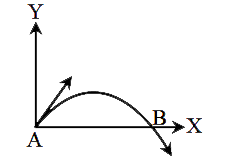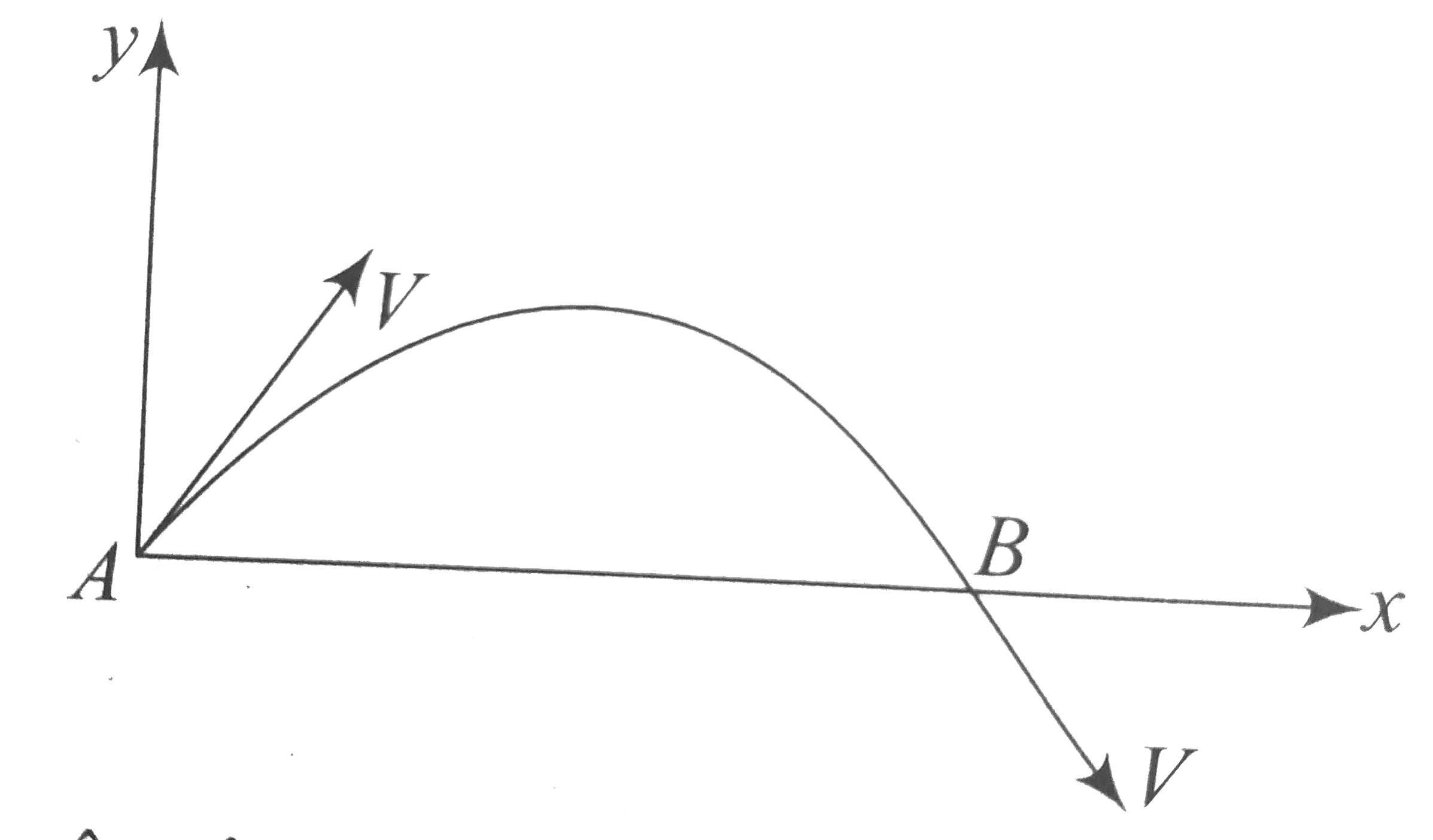A particle of mass 2kg located at the position (ˆi+ˆj)m has velocity 2(ˆi−ˆj+ˆk)m/s . Its angular momentum about Z-axis in kgm2/s is
zero
+8
12
−8
The correct Answer is:D
To find the angular momentum of a particle about the Z-axis, we can use the formula:
→L=→r×→p
where →L is the angular momentum, →r is the position vector, and →p is the linear momentum of the particle. The linear momentum →p can be calculated as:
→p=m→v
where m is the mass of the particle and →v is its velocity.
Step 1: Identify the given values
- Mass m=2kg
- Position vector →r=^i+^jm
- Velocity vector →v=2(^i−^j+^k)m/s
Step 2: Calculate the linear momentum →p
Using the formula for linear momentum:
→p=m→v=2kg⋅2(^i−^j+^k)m/s
Calculating this gives:
→p=4(^i−^j+^k)kg m/s=4^i−4^j+4^kkg m/s
Step 3: Calculate the angular momentum →L
Now we can calculate the angular momentum using the cross product:
→L=→r×→p=(^i+^j)×(4^i−4^j+4^k)
Step 4: Expand the cross product
Using the distributive property of the cross product:
→L=^i×(4^i−4^j+4^k)+^j×(4^i−4^j+4^k)
Calculating each term:
1. ^i×4^i=0
2. ^i×(−4^j)=−4(^i×^j)=−4^k
3. ^i×4^k=4(^i×^k)=4(−^j)=−4^j
Now for the second part:
1. ^j×4^i=4(^j×^i)=−4^k
2. ^j×(−4^j)=0
3. ^j×4^k=4(^j×^k)=4^i
Combining all these results:
→L=(0−4^k−4^j)+(4^i−4^k+0)=4^i−4^j−8^k
Step 5: Find the angular momentum about the Z-axis
The angular momentum about the Z-axis corresponds to the coefficient of ^k:
Lz=−8kg m2/s
Final Answer
The angular momentum of the particle about the Z-axis is:
→Lz=−8kg m2/s
- Mass m=2kg
- Position vector →r=^i+^jm
- Velocity vector →v=2(^i−^j+^k)m/s
Using the formula for linear momentum:
Now we can calculate the angular momentum using the cross product:
Using the distributive property of the cross product:
2. ^i×(−4^j)=−4(^i×^j)=−4^k
3. ^i×4^k=4(^i×^k)=4(−^j)=−4^j
2. ^j×(−4^j)=0
3. ^j×4^k=4(^j×^k)=4^i
The angular momentum about the Z-axis corresponds to the coefficient of ^k:
The angular momentum of the particle about the Z-axis is:
Topper's Solved these Questions
- ROTATIONAL MOTIONBook:DC PANDEY ENGLISHChapter:ROTATIONAL MOTIONExercise:A Only One Option is Correct
Explore 86 Videos
- ROTATIONAL MOTIONBook:DC PANDEY ENGLISHChapter:ROTATIONAL MOTIONExercise:More than one option is correct
Explore 36 Videos
- ROTATIONAL MECHANICSBook:DC PANDEY ENGLISHChapter:ROTATIONAL MECHANICSExercise:Subjective Questions
Explore 2 Videos
- SEMICONDUCTORS AND ELECTRONIC DEVICESBook:DC PANDEY ENGLISHChapter:SEMICONDUCTORS AND ELECTRONIC DEVICESExercise:More than One Option is Correct
Explore 3 Videos
Similar Questions
A particle of mass 2kg located at the position (ˆi+ˆk)m has a velocity 2(+ˆi−ˆj+ˆk)m/s. Its angular momentum about z−axis in kg−m2/s is :
View SolutionA block of mass 2 kg is moving with a velocity of 2ˆi−ˆj+3ˆk m/s. Find the magnitude and direction of momentum of the block with the x-axis.
View Solution
Knowledge Check
Two particles of masses 1 kg and 3 kg have position vectors 2ˆi+3ˆj+4ˆkand−2ˆi+3ˆj−4ˆk respectively. The centre of mass has a position vector
Aˆi−3ˆj−2ˆkB−ˆi−3ˆj−2ˆkC−ˆi+3ˆj+2ˆkD−ˆi+3ˆj−2ˆkTwo particles of masses 1 kg and 3 kg have position vectors 2ˆi+3ˆj+4ˆkand−2ˆi+3ˆj−4ˆk respectively. The centre of mass has a position vector
Aˆi+3ˆj−2ˆkB−ˆi−3ˆj−2ˆkC−ˆi+3ˆj+2ˆkD−ˆi+3ˆj−2ˆk
A uniform force of (3ˆi+ˆj) N acts on a particle of mass 2kg. Hence, the particle is displaced from position (2ˆi+ˆk)m to position (4ˆi+3ˆj−ˆk)m. The work done by the force on the particle is
View SolutionThe velocity of a projectile at the initial point A is (2ˆi+3ˆj)ms. It's velocity (in m/s) at point B is -

View SolutionThe velocity of a projectile at the initial point A is (2ˆi+3ˆj)m/s. Its velocity (in m/s) at point B is

View SolutionA particle of mass 15 kg has an initial velocity →vi=ˆi−2ˆjm/s . It collides with another body and the impact time is 0.1s, resulting in a velocity →cf=6ˆi+4ˆj+5ˆkm/s after impact. The average force of impact on the particle is :
View SolutionA particle is located at (3m , 4m) and moving with v=(4ˆi−3ˆj)m/s. Find its angular velocity about origin at this instant.
View SolutionTwo particles of masses 100 gm and 300 gm have at a given time, position 2ˆi+5ˆj+13ˆk and −6ˆi+4ˆj−2ˆk respectively and velocities 10ˆi−7ˆj−3ˆk and −7ˆi−9ˆj−6ˆk m/s respectively. Deduce the instantaneous position and velocity of the Centre of mass.
View Solution